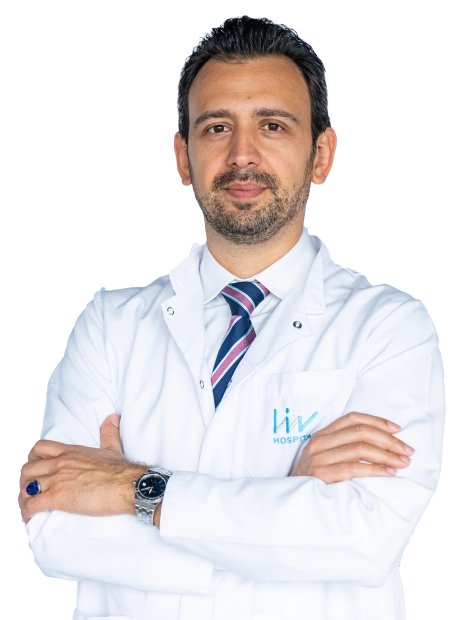-
What Is Adenocarcinoma?
-
Causes and Risk Factors of Adenocarcinoma
-
What Are the Symptoms of Adenocarcinoma?
-
Common Organs Affected by Adenocarcinoma
-
Adenocarcinoma Diagnosis
-
Modern Treatment Options for Adenocarcinoma
-
Life After Adenocarcinoma Treatment
-
Frequently Asked Questions
Despite advances in modern medicine, certain types of cancer continue to progress rapidly, often leading to delayed diagnosis. Adenocarcinoma is a malignant tumor that can develop in various organs due to the uncontrolled growth of glandular cells.
Originating in glandular tissues, this cancer typically presents with significant symptoms and requires a multidisciplinary treatment approach. Early detection of adenocarcinoma can greatly improve both quality of life and overall survival rates.
What Is Adenocarcinoma?
Adenocarcinoma is a malignant cancer that arises from glandular cells that secrete mucus or fluids. These cells are normally found in the digestive, respiratory, and reproductive systems, and may become cancerous due to genetic mutations. The term “adenocarcinoma” is often used in conjunction with the affected organ, as the behavior and treatment of the disease vary depending on the site.
Common sites for adenocarcinoma include the lungs, stomach, colon, rectum, pancreas, prostate, and breast. Each organ-specific form may differ in its symptoms and therapeutic approaches.
Causes and Risk Factors of Adenocarcinoma
While the exact causes of adenocarcinoma are not always clear, both genetic predisposition and environmental factors are believed to play a role.
Contributing Factors to Adenocarcinoma Development
- Tobacco use is a major risk factor, especially for lung adenocarcinoma
- Alcohol consumption can lead to cellular damage in organs like the stomach and pancreas
- Genetic mutations and family history significantly increase risk
- Obesity and sedentary lifestyle are linked to colorectal and breast adenocarcinomas
- Advanced age contributes due to reduced cellular regeneration
- Infections such as Helicobacter pylori (stomach cancer) or HPV (cervical adenocarcinoma)
- Diets high in fat and low in fiber also elevate risk
What Are the Symptoms of Adenocarcinoma?
Adenocarcinoma symptoms vary depending on the affected organ, tumor size, and spread.
General Early-Stage Symptoms
- Fatigue and weakness
- Loss of appetite and unexplained weight loss
- Symptoms of anemia
- Night sweats
- Pale skin and reduced physical performance
- Advanced-Stage Symptoms
- Increased pain, especially with metastasis
- Blood in stool, urine, or sputum
- Signs of organ failure (e.g., jaundice, shortness of breath, abdominal swelling)
- Difficulty swallowing, nausea, signs of bowel obstruction
- Lumps on the skin or nipple changes in breast cancer
Organ-Specific Symptoms of Adenocarcinoma
- Lung adenocarcinoma: Cough, blood-tinged sputum, chest pain
- Stomach adenocarcinoma: Early satiety, indigestion, vomiting
- Colorectal adenocarcinoma: Bloody stool, changes in bowel habits
- Pancreatic adenocarcinoma: Abdominal/back pain, jaundice
- Prostate adenocarcinoma: Frequent urination, difficulty urinating
- Breast adenocarcinoma: Hard lump, nipple discharge or retraction
While adenocarcinoma may not always be preventable, recognizing symptoms early can accelerate diagnosis and treatment.
Common Organs Affected by Adenocarcinoma
Adenocarcinoma is a subtype of cancer frequently found in:
Lung Adenocarcinoma
Even non-smokers can be affected. It typically forms in the outer regions of the lungs. Early detection is difficult, making regular screenings important.
Stomach Adenocarcinoma
Develops in the stomach lining and is commonly associated with chronic gastritis, H. pylori infection, and high-salt diets.
Colorectal Adenocarcinoma
Can develop in the colon or rectum. It may have a genetic component and can be asymptomatic for long periods. Screening tests are critical for early detection.
Pancreatic Adenocarcinoma
This aggressive cancer is often diagnosed late. Common symptoms include abdominal pain, jaundice, and weight loss.
Prostate Adenocarcinoma
The most common type of prostate cancer. Usually slow-growing, though some variants can spread rapidly.
Breast Adenocarcinoma
The most frequent type of breast cancer in women. Early detection through mammography increases survival. Often linked to hormonal and genetic factors.
Adenocarcinoma Diagnosis
Early diagnosis is crucial for effective adenocarcinoma treatment. Diagnostic procedures are multidisciplinary and vary by cancer stage but generally include:
- Blood tests (tumor markers like CEA, CA 19-9)
- Imaging (ultrasound, CT, MRI)
- Endoscopic exams (colonoscopy, bronchoscopy, gastroscopy)
- Biopsy for histopathological confirmation
Adenocarcinoma can be fatal if not detected early or if it has reached an advanced stage.
Adenocarcinoma Staging and Its Importance
Adenocarcinoma is staged using the TNM system:
- T (Tumor): Size and local invasion
- N (Nodes): Involvement of regional lymph nodes
- M (Metastasis): Spread to distant organs
Early-stage diagnosis offers a higher chance of curative treatment. Advanced stages often require palliative approaches to prolong life and manage symptoms.
Modern Treatment Options for Adenocarcinoma
Adenocarcinoma treatment is tailored based on tumor stage and patient health. Various modern treatments are used today, including surgery, chemotherapy, radiotherapy, targeted therapy, and immunotherapy.
Surgical Treatment
Surgical removal of the tumor can be highly effective in early stages. Depending on the tumor’s size and location, partial or full resection of the organ may be required. Surgery is often combined with other treatments.
Radiation Therapy
Uses high-energy rays to destroy cancer cells. It can be administered before or after surgery, or alongside chemotherapy.
Chemotherapy
One of the most widely used methods, especially effective against fast-growing cancer cells.
Targeted Therapy
Uses drugs designed to act on specific molecular targets within cancer cells, offering greater efficacy with fewer side effects.
Immunotherapy
A modern approach that stimulates the immune system to fight cancer. Promising results have been seen in certain types of lung and gastric adenocarcinomas.
Life After Adenocarcinoma Treatment
Post-treatment care involves regular check-ups, lifestyle changes, and psychological support if needed. Close follow-up is especially important during the first two years due to the risk of recurrence. Diet, physical activity, and sleep hygiene can positively impact survival.
Adenocarcinoma Prognosis
Is adenocarcinoma dangerous? The prognosis depends on the stage, tumor type, and overall health of the patient. Early-stage adenocarcinoma has a high survival rate, while advanced-stage cases focus on life extension and symptom control.
Ways to Reduce the Risk of Adenocarcinoma
- Avoid smoking and alcohol
- Maintain a high-fiber, balanced diet
- Exercise regularly
- Keep up with screening tests
- Monitor more frequently if there's a family history of cancer
- Treat infections like H. pylori or HPV promptly
Frequently Asked Questions
Can Adenocarcinoma be Cured Completely?
Yes, if diagnosed early and treated appropriately. Surgery offers high success rates in early stages. In advanced cases, the goal shifts to disease control and life extension.
What is the Most Common Symptom of Adenocarcinoma?
There’s no single universal symptom, but common signs include weight loss, appetite loss, digestive problems, and pain.
Is Adenocarcinoma Genetic? Can It Run in Families?
Some adenocarcinomas are linked to hereditary factors. Individuals with a family history of breast, colon, or pancreatic cancer may be at increased risk.
What Tests Are Used to Diagnose Adenocarcinoma?
Imaging (CT, MRI), blood tests, endoscopy, and biopsy are standard diagnostic tools, coordinated by a specialist team.
How Long Does Adenocarcinoma Treatment Last?
Treatment duration varies by stage and method. Early-stage surgeries may be completed in weeks, while advanced chemotherapy regimens can last several months.
Is Adenocarcinoma Always Malignant?
Yes. Adenocarcinoma is classified as a malignant tumor. However, some forms can be detected in premalignant stages and treated before progressing.
* Contents of this page is for informational purposes only. Please consult your doctor for diagnosis and treatment. The content of this page does not include information on medicinal health care at Liv Hospital .

